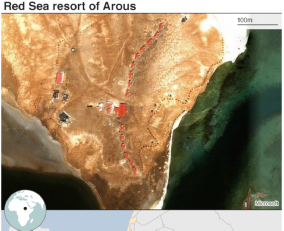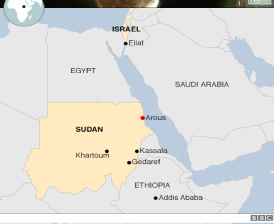|
T O P I C |
|
|
|
|
|
|
|
|
|
|
|
|
|
|
|
|
|
|
JewishWikipedia.info
See our new site:
(ETHIOPIA WAS PREVIOUSLY CALLED ABYSSINIA)
THE HISTORY OF ETHIOPIAN JEWRY
United with Israel, Rachel Avraham,
The Ethiopian Jewish heritage is a rich and ancient one that deserves to be remembered. According to the Ethiopian historian Yohanes Zeleke, Ethiopian oral Jewish tradition maintains that Jews came to Ethiopia in stages, the earliest one being during the time of the famine in Canaan, when Abraham was forced to flee southwards. Ethiopian Jews believe that other waves include during the times of slavery in Egypt; during the reign of Manasseh of Judah, who sought to forcefully convert Jews into pagans; and another group came accompanying Melinik I, the son of King Solomon. Additional Jews are reported to arrive in Ethiopia following the destruction of the First Temple in Jerusalem.
From the 7th century BCE up until 330 AD, Judaism was the official state religion of Ethiopia. However, Ethiopia became a Christian country when the Ethiopian Emperor Ezana converted to Christianity. The Christians behaved very brutally to the Jews in Ethiopia, resulting in them revolting and overthrowing their Christian overlords. In the 9th century, Ethiopia became a Jewish country again under the leadership of Queen Yeodit. However, following three additional centuries of Jewish rule, Egypt grew wary of the growing power of Jewish Ethiopia and united with the Ethiopian Orthodox Church to overthrow the Jewish government in Ethiopia. Following the regime change in Ethiopia, countless Ethiopian Jews were murdered, sold into slavery, or forcefully converted to Christianity.
From the 14th century onward, with the brief exception of the rule of one Jewish emperor named Tewodros II in the 1800’s, the vast majority of Ethiopian Jews were forced to live as powerless and exploited landless peasants. However, in 1624, Jews did seek to regain their autonomy around the same time that Muslims in Ethiopia were also revolting against a policy of forced conversion, yet ended up instead committing a mass suicide that had an uncanny resemblance to Masada rather than be taken prisoner. At that time, all Ethiopian Jewish religious and history books were burnt as an attempt to eradicate Ethiopia’s Jewish heritage.
In the 20th century, the plight of Ethiopian Jews was very dire. When Colonel Mengistu Haile Mariam rose to power in a coup d’état, 2,500 Jews were slaughtered and 7,000 additional Jews became homeless. Mariam’s Marxist ideology encouraged anti-Semitism within Ethiopia. In the 1980’s, Ethiopia forbade the practice of Judaism and the teaching of Hebrew. Countless Ethiopian Jews were imprisoned on fabricated charges of being Zionist spies and Ethiopian Jewish rabbis, known as Kesim, were constantly harassed by the Ethiopian government. Furthermore, forced military conscription took Jewish boys as young as 12 years old away from their families, who often never heard from their children again. Yet, to make matters even worse, a famine erupted around this time period as well.
While over 8,000 Ethiopian Jews came to Israel between 1977 and 1984, most Ethiopian Jews were still in Ethiopia in 1984. Although Operation Moses which occurred between November 18, 1984 and January 5, 1985 brought 7,000 Jews to Israel, it came at a great humanitarian cost. In order to reach Israel, Ethiopian Jews were forced to march to Sudan at night, while hiding during the day from robbers and soldiers. 4,000 Ethiopian Jews would perish trying to make Aliyah, either from the poor sanitary conditions in the refugee camps in Sudan, from starvation along the way, disease, or from murder, and countless Ethiopian Jewish women were raped while trying to reach Israel.
However, after that point, the remainder of Ethiopian Jews, principally the elderly, the sick and small children who were unable to flee to Sudan, were stranded in Ethiopia. Over 1,600 Ethiopian Jewish children did not know the fate of their parents. It was only when rebels overthrew the Mariam dictatorship that Israel was able to rescue an additional 14,324 Ethiopian Jews from Ethiopia, during Operation Solomon, in 1991. Today, over 36,000 Ethiopian Jews live in Israel.
THE PLIGHT OF ETHIOPIAN JEWS
Cultural Survival, Judith Antonelli, September 1983
Jews have lived in Ethiopia for over 2000 years. According to Ethiopian tradition, one-half of the population was Jewish before Christianity was proclaimed the official religion in the 4th century. The Jews maintained their independence for over 1000 years in spite of continuous massacres, religious persecution, enslavement, and forced conversions.
With the help of modern Portuguese weapons, the Amhara finally conquered the Jews in 1616, enslaving, converting, and killing them. Known as "Falashas" - a derogatory name meaning "stranger" or "exile" - Ethiopian Jews could no longer own land or be educated. Today Jews number only 25,000, less than 1 % of the population. Eighty-five percent live in Gondar Province, in the Semien Mountains near Lake Tana; the rest live in Tigre and Wollo Provinces.
Ethiopian Jews are Biblical, pre-Rabbinic Jews. They have the Torah (Written Law) but not the Talmud (Oral Law). Their language is not Hebrew, but Ge'ez. Their leaders are priests (kohanim) rather than rabbis. They have no knowledge or post-Biblical Jewish holidays such as Chanukah or Purim, or post-Biblical interpretations of the Law, e.g., the prohibition against mixing meat and milk. Until recently Ethiopian Jews practiced animal sacrifice, and ritual purification through immersion in water. Otherwise their religion is the same as Judaism throughout the world, including observance of the Sabbath and Biblical dietary laws. They are religious Zionists - i.e., they dream of a return to Zion. They call themselves Beta Israel (House of Israel), and have wanted to live in the modern state of Israel since its establishment in 1948.
Ethiopian Coptic Christianity incorporates an unusually large number of Judaic practices, including male circumcision, kosher dietary laws, and the Sabbath (which Christians observe on Saturday as well as Sunday). Christian emperors wore the Star of David on their crown, and Haile Selassie, the last of these emperors, was known as "Conquering Lion of the Tribe of Judah, Elect of God."
The incorporation of Jewish practices into Coptic Christianity has not benefitted Ethiopian Jews but, rather, has given rise to a great deal of hostility. The Kebra Nagast (Glory of Kings), the religious and national epic dating from the 14th century, illustrates Ethiopian Christianity's attitude toward Jews. It states that Ethiopia was chosen as Zion by God, because the Jews are "unworthy," "wicked," "Christ-killers," "enemies of God," and will therefore be exterminated. The Christians view the Jews, whose landlessness has forced them to work as potters and blacksmiths, as possessed by buda, a satanic occult power. This power, many Christians still believe, enables the Jews to turn into hyenas at night, possess young women, eat corpses or turn them into animals, prey on children, kill cattle, and turn people into donkeys to enslave them. Jews are often blamed for causing hunger, crop failure, blindness, insanity, illness, and death.
Missionaries helped to promote this idea of the evil Jew who torments Christians. Jesuits, arriving in 1541 with the Portuguese, wanted to convert Jews to Roman Catholicism, but they were banished in the 17th century. No other missionaries came until the mid-19th century, the height of the Protestants' conversion campaign. Shortly after the London Society for Promoting Christianity Among the Jews opened a missionary school, Jews tried to leave the country en masse, but many died from starvation, malaria, and beatings. Even after the missionaries were imprisoned and expelled, converted Jews continued to preach as lay teachers, and after World War II Haile Selassie welcomed back the exiled Protestant missionaries. To this day Ethiopian Jews are wary of strangers, and converts are ostracized.
Today, besides the 25,000 Jews known as Oritawi (Torah-true), there may be as many as 50,000 Maryam Wodet (Lovers of Mary) - Jews who, like the Marranos of Spain, converted to Christianity but secretly practice Judaism. Their main motive for converting was to gain land and to lose the stigma attached to being Jewish. But although they change their names and avoid smithing and pottery, they do not always pass for Christians; converts are seen as baptized Jews.
The Marxist government expelled missionaries in 1977. Although the government sees all religion as an enemy of the state, it could not successfully prohibit it. Christianity and Islam became official religions, and district representatives have held compulsory seminars dwelling on the evils of "non-traditional," illegal religions - i.e., Judaism and animism.
Under the new government's land redistribution policy, Jews are allowed to own land. However, the peasant associations in charge of distribution gave poor-quality land to Jews, and many are still without any land. Landlords continued to demand rent payments (50 % of the crop) even after land reform, and when Jews went to court their cases were thrown out.
Jews have been scapegoats of both the right and the left. On the right, an anti-Marxist former landowners' group, the Ethiopian Democratic Union, went on a rampage against the Jews in 1978, cutting children's feet off, bludgeoning babies, castrating men, raping women, torturing old people, and selling women and children into slavery. On the left, the Marxist-Leninist Ethiopian People's Revolutionary Party has also attacked Jews as having "narrow nationalist" interests that are not acceptable in a modern (i.e. Amhara-dominated) state.
Jews have been persecuted by the government as well. In 1981, Major Melaku, member of the central ruling party and governor of Gondar Province, confiscated religious books, closed the synagogues and schools, imprisoned and tortured Hebrew teachers and religious leaders for teaching "Zionist propaganda," made it hard for Jews to travel in the country, and closed the market except on Saturdays - thus forcing Jews, who will not work or travel on the Sabbath, to hire Moslem middlemen who take most of the profits. Today no Jewish education or religious practices are allowed.
The government's policy against emigration is more stringently applied to the Jews because of the current regime's anti-Zionism. Allowing Ethiopian Jews to emigrate is viewed as indirect aid to Israel. Jews are arrested when they try to escape, and when a person does get out, others are arrested to obtain information. Once imprisoned, they are often tortured - hung, beaten, forced to walk on broken glass. According to an Ethiopian Jew who recently spoke in Boston, conditions are deteriorating.
In spite of this, many Jews have managed to escape to neighboring Arab countries where Jewish refugees are frequently harassed, arrested, tortured, killed, or kidnapped into slavery. As a result, many refugees pretend to be Christians. Others try to make it on their own, living outside refugee camps in a land where they do not know the language, culture, or religion. Approximately 3000 Jews are now in these refugee camps, and some visitors to the camps indicate that their situation is even more urgent than that of Jews who remain in Ethiopia.
Prior to 1975, Ethiopian Jews were not allowed to immigrate to Israel, although some were brought in to learn Hebrew in order to teach in Ethiopia. Others gained entry by disguising themselves as Christian pilgrims. In 1975, the Ashkenazi Chief Rabbi followed the Sephardic Chief Rabbi's 1973 declaration that the Beta Israel are indeed Jews, and they were granted automatic citizenship under the Law of Return. Despite this declaration, little was done to bring Ethiopian Jews to Israel.
Since 1980 this situation has been changing. Public awareness of Black Jews has increased, and the Begin government has made great strides in helping Ethiopian Jews resettle in Israel.
Over 3000 Ethiopian Jews now live in Israel. Upon arrival they are given medical treatment, as most suffer from eye, respiratory, or internal illnesses. They are taken by bus to an integration center where they remain for 12-18 months (other immigrants remain only six months at these centers), and are given free housing, health care, utilities, and a stipend.
For the first two weeks they are left alone with earlier arrivals from Ethiopia. They then begin an intensive course in Hebrew, and three or four newcomers are assigned to an Israeli who lives nearby and who will spend six to eight hours a day with them. Most Ethiopian Jews have never seen or used a bed, a cupboard, a gas stove, electricity, water faucets, or a toothbrush. Ninety-five percent are illiterate. They must learn how to hold a pencil, how to use canned goods, how to shop and use a bank if they are to adapt to life in Israel.
Ethiopian immigrants have adapted quickly to Israeli society: Many are studying at universities, or working as nurses, electronic technicians, farmers, and computer scientists. At the same time, they are trying to maintain their own cultural identity within Israeli society, making and selling their crafts, singing Ethiopian songs, and putting together an art exhibit - encouraged and aided by Israeli social workers. The World Zionist Organization is planning to establish a moshav (cooperative settlement) for Ethiopian Jews within the next two years.
Several groups have been formed in Israel and in North America to help Ethiopian Jews, including the Union for Saving Ethiopian Jewish Families (Israel), the Canadian Association for Ethiopian Jews, the American Association for Ethiopian Jews, and the Ethiopian Jewry Committee of the Jewish Community Council of Metropolitan Boston.
In August 1982 the House of Representatives Committee on Foreign Affairs heard testimony on the status of Ethiopian Jews, and in April 1983 Reps. Stephen Solarz and Barney Frank sponsored a bill (H. Con. Res. 107) calling upon the U.S. government to express concern to "relevant foreign governments" and to seek ways to help Ethiopian Jews emigrate. On 19 July 1983 Paul Tsongas introduced a Senate version of the same bill (S. Con. Res. 55).
Ethiopian authorities have shown they are alert to public opinion, so Americans should write to their Representatives and Senators urging them to support these bills. The 1983 State Dept. Report on Human Rights Practices says, "In the religious and cultural areas, Falashas are worse off since mid-1981 than other ethnic groups in the Gondar Province." Ethiopian Jews constitute the most threatened Jewish community in the world.
RED SEA DIVING RESORT:
THE HOLIDAY VILLAGE RUN BY SPIES
Arous was an idyllic holiday resort in the Sudanese desert, on the shores of the Red Sea. But this glamorous destination was also
a base for Israeli agents with a secret mission.
The events inspired a newly released Netflix film, Red Sea Diving Resort - and the real story is in many ways more remarkable.
BBC News, Tel Aviv, Raffi Berg, 5 August 2019
(see IMDBb for movie review)
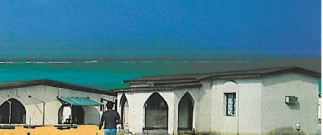
Arous was an idyllic holiday resort in the Sudanese desert, on the shores of the Red Sea. But this glamorous destination was also a base for Israeli agents with a secret mission. The events inspired a newly released Netflix film, Red Sea Diving Resort - and the real story is in many ways more remarkable.
"Arous on the Red Sea, a wonderful world apart," the glossy brochure says, pronouncing it "the diving and desert recreation centre of Sudan".
Illustrated with pictures of putty-coloured chalets on a sun-drenched beach, a smiling couple in scuba gear, and varieties of exotic fish, the advertisement boasts of "some of the best, clearest water in the world". As night falls - "after the landscape colours have paled" - there are, it says, "breathtaking views of the heavens, aflame with millions of stars".
Arous Village, on the fringe of spectacular coral reefs and the odd shipwreck, appears to be a diving enthusiast's dream.
The pamphlets were printed in their thousands and distributed in specialist travel agents across Europe. Reservations were booked through offices in Geneva and Khartoum. And over time hundreds of guests went on holiday there.
It was a long trek. But once at the desert oasis, they enjoyed first-rate facilities, water sports, deep-sea dives and an abundance of fresh food and wine. The visitors' book was a catalogue of glowing comments.

The Sudanese International Tourist Corporation was also happy. It had leased the site to a group of people introducing themselves as European entrepreneurs, whose venture brought some of the first foreign tourists to the country.
The only thing was, unbeknown to the guests or the authorities, the Red Sea diving resort was entirely fake.
It was a front, set up and run for more than four years in the early 1980s by operatives from the Mossad, Israel's intelligence agency.
They used it as a cover for an extraordinary humanitarian mission - to smuggle out thousands of beleaguered Ethiopian Jews stranded in refugee camps in Sudan and evacuate them to Israel. Sudan was an enemy country tied to the Arab world, and it had to be done without anyone finding out, either there or at home.
The operation was so secret, only the people directly involved knew. The agents did not even tell their own families
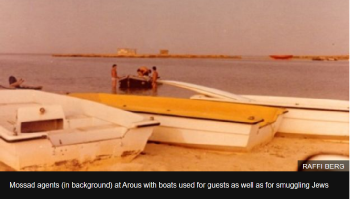 The Ethiopian Jews belonged to a community called Beta Israel (House of Israel), whose origins are shrouded in mystery.
The Ethiopian Jews belonged to a community called Beta Israel (House of Israel), whose origins are shrouded in mystery.
For many centuries, a prominent theory contended they were descended from Israelites who had accompanied a son of the Queen of Sheba and King Solomon back to Ethiopia around 950BC, smuggling the Ark of the Covenant with him. It has alternatively been suggested they ended up there after fleeing civil war in ancient Israel, or fled into exile after the destruction of the Jewish Temple in Jerusalem 586BC.
By the early 1970s, Israel's chief rabbis officially endorsed the views of illustrious rabbis down the ages that the Beta Israel belonged to one of the so-called 10 lost tribes, who disappeared from history following an invasion of the Kingdom of Israel in the 8th Century BC.
The Ethiopian Jews adhered to the Torah, practised a Biblical version of Judaism, and prayed in buildings similar to synagogues. But, isolated from the rest of Jewry for millennia, they believed they were the last remaining Jews in the world.
In 1977 one of their members, Ferede Aklum, wanted by the Ethiopian authorities for "anti-government activity" (Aklum was suspected of sympathising with rebels and of treachery for encouraging Jews to emigrate to Israel) escaped to Sudan, along with a wave of non-Jewish Ethiopian refugees fleeing civil war and a deepening food crisis.
He sent letters to relief agencies, pleading for help to get to Israel, and one found its way to the Mossad. For the then Israeli Prime Minister, Menachem Begin - himself a refugee from Nazi-occupied Europe - Israel existed as a safe haven for Jews in peril. The Beta Israel were no exception and he ordered the intelligence agency to act.
The Mossad instructed one of its operatives, Dani, to locate Ferede and find a way of smuggling any Ethiopian Jews in Sudan out and on to Israel.
After a difficult search - "like finding a needle in a haystack", says Dani - the agent tracked Ferede down in Khartoum and the two men teamed up. Ferede channelled messages back to his community in Ethiopia, saying the way to Jerusalem lay through Sudan, and they should follow his lead.
It offered the tantalising opportunity of fulfilling a 2,700-year-old dream. In the period up to late 1985, some 14,000 Beta Israelis took the chance and made the perilous 800km (500-mile) journey by foot.
About 1,500 of the Jewish refugees were killed along the way, perished in the squalid camps around Gedaref and Kassala, or were abducted.
As there were no known Jews in Sudan, a Muslim-majority country, they hid their religion so as to blend in and not get caught by the Sudanese secret police. Despite the risk, they continued their Jewish practices, such as snuffing out fires in the camps before Sabbath (when Jewish law forbids lighting flames) and eating only meat which complied with Jewish dietary rules.
RESCUE MISSION
Almost straight away, some small-scale clandestine evacuations got under way, led by Dani and Ferede, with Ethiopian Jews smuggled through Khartoum airport to Europe on forged papers, then on to Israel. But as numbers grew, it became clear that another way was needed.
"I was thinking about the sea," recalls Dani in my forthcoming book on the operation. "Sudan was not like Ethiopia [where civil war and mountainous terrain meant Jews there could not be transported over land to the coast]. If we could evacuate people [from Sudan] by the Red Sea and have a boat coming in, then we could do things on a larger scale."
It was on a trip up Sudan's coast looking for possible landing beaches in late 1980 that Dani and another agent stumbled across an abandoned resort at Arous, about 70km (43 miles) north of Port Sudan.
"We saw something that looked to us like a mirage," he says. "We saw buildings with red tiled roofs - [but] we were in Sudan, we were not somewhere else."
A caretaker informed them that it had been run by an Italian company but had shut a couple of years earlier. He let them inside and showed them around.
"We understood immediately the meaning of this," Dani says. "If we get this village we are kings of the land - with a thing like that [as a cover], the sky's the limit!"
What happened next was the subject of the Netflix film Red Sea Diving Resort. Shot in Namibia - where they recreated the resort - and South Africa, the film depicts the operation and the holiday village. It stars Captain America actor Chris Evans, whose character in the Netflix film is based on Dani (the two met when Evans was researching the role). Other lead characters are based on members of the Mossad team recruited by Dani for the mission.
The film makes clear it is "inspired" (rather than based on) real events, leaving ample room for invention. Some scenes loosely represent what happened, but some parts are pure Hollywood (for instance, no Jews were ever smuggled through the resort itself, and the Americans did not know about the operation, let alone airlift the refugees out - something which was done by the Israeli air force).
Completed in 1974 by Italian entrepreneurs, the resort was a cluster of 15 red-roofed bungalows, a kitchen and a large dining room opening out to the beach, a lagoon and the sea.
There was no infrastructure in place (not even an approach road) but the Italians brought in a generator and got fresh water from Port Sudan. They ran it quite successfully for five years but after disputes with Sudanese officials they pulled out, and the resort shut a year later.
"It's a very difficult place to run, if you don't have the Mossad behind you," says an agent involved in the operation who did not wish to be identified.
Posing as the director of a Swiss-based tourism company (which did not in actual fact exist), Dani convinced the Sudanese authorities that he could revive the resort and bring in tourists again. They agreed to let him rent it for $250,000 (approx £106,000 at the time).
FAKE RESORT
Dani and members of his team spent the first year renovating it. The resort was kitted out with Israeli-made equipment, including air-conditioning units, outboard motors, and top-of-the-range water sports gear - including the first windsurfing board in Sudan - all smuggled into the country.
They also recruited about 15 local staff, including chambermaids, waiters, a driver and a chef "poached" from a hotel. "We paid him double," said the unnamed operative. None of the staff knew the resort's real purpose, or that their Caucasian managers were Mossad agents.
Female members of the team were put in charge of the day-to day running of the place, which it was thought would lower any suspicions.
The diving storeroom was out-of-bounds. In it were concealed radios the agents used to keep in regular contact with headquarters back in Tel Aviv.
While seeing to their guests by day, every so often at night a squad would leave under cover of darkness and head to a rendezvous point 900km (560 miles) away on the edge of Gedaref.
There they would pick up groups of Ethiopian Jews, smuggled out of the camps by so-called Committee Men - a handful of Beta Israel recruited for the job.
"At first, the refugees were given 24 hours' notice that they were going to be taken to taken out - they were not told where to but understood it was Jerusalem - but eventually we could not give them any notice at all because of the risk it would leak out," says Dani. "They were just quietly woken up and told it was time to leave."
From there, a convoy of lorries carrying dozens of bewildered refugees drove a two-day journey, travelling only by night and hiding in a concealed wadi during the day.
In the early days of the operation, the vehicles would run through checkpoints, but this practice stopped when a guard opened fire (though he missed).
When the Jews disembarked at the wadi, they sometimes kissed the ground in the mistaken belief that they had already reached the holy city.
Once they got to the coast near the holiday village, Israeli navy special forces would come ashore on Zodiac dinghies, collect the refugees and transport them to an Israeli ship, the INS Bat Galim, waiting further out at sea.
The ship then took them to Israel.
"It was constantly dangerous," says the unnamed operative. "We all knew that if any one of us got exposed, we'd end up hanged on gallows in the centre of Khartoum."
They came close to it in March 1982, when on the third such operation the group was spotted in mid-transfer on the beach by Sudanese soldiers. Possibly suspecting smugglers, a soldier opened fire - but the Zodiacs, with the Ethiopians on board, managed to get away.
After that, it was decided naval evacuations were too exposed, and a new plan was devised. The agents were tasked with finding a suitable landing spot in the desert for C130 Hercules planes. The refugees were going to be secretly airlifted out of the country.
Read more about Ethiopian Jews:
Mystery origins of the Ethiopian Jews
'Last airlift' of Ethiopian Jews to Israel
In the meantime, the Israelis continued to run the diving resort and entertain the guests. By now, Arous Village had earned quite a reputation and word spread.
"Arous was really beautiful," one former American guest told me. "They had these lovely little vacation cabins and you'd go out on boats and go diving or snorkelling. The underwater scenery was just breathtaking.
"I remember the 'European' staff all looked young and really healthy and fit, and at dinner time, people would say: 'Why the heck [build a resort] here?' Of course, the answer was it was totally gorgeous and unspoilt, and people were saying: 'Wow, I hope they can make a go of it.'"
The resort counted among its varied clientele an Egyptian army unit, a group of British SAS soldiers, foreign diplomats from Khartoum and Sudanese officials - all unaware of their hosts' true identity.
Arous Village made enough money to sustain itself financially, much to the relief of the accountants back at Mossad HQ. Some of the takings were used to buy or rent the lorries that took the refugees.
AIRLIFTED TO SAFETY
Meanwhile, the airlifts got under way. Israeli air force planners identified an abandoned World War Two British airfield not far from the coast, and in May 1982 the first Hercules, carrying Israeli commandos, landed there in the dead of night.
"Many of the Ethiopian Jews had never even seen a lorry before, so to them the commandos waving green stick lights looked like aliens, and they were afraid to go inside [the plane]," recalls Dani.
They identified suitable locations much nearer Gedaref, which had the advantage of reducing the time on the road with the refugees to a couple of hours. The downside was "they weren't airstrips, they were just a piece of desert", according to the unnamed agent.
"The strips were hardly lit," he says. "We had just 10 tiny infrared lights and the C130 pilots had to find us without navigational aids and after a long, tedious flight, in pitch black.
"By comparison, Entebbe was a piece of cake as far as flying's concerned," he says, referring to the daring hostage rescue in Uganda in 1976, which saw an Israeli Hercules land at the airport in a surprise raid and fly out again with more than 100 people freed by commandos.
Despite the complexities and potentially catastrophic consequences of failure, 17 clandestine flights were carried out, co-ordinated by the agents of the Red Sea diving resort.
Towards the end of 1984, famine was declared in Sudan, and it was decided to further escalate the evacuations.
With intervention from the US, and a large payment, Sudan's president, Gen Jaafar Nimeiri, agreed to let Jewish refugees be flown directly out from Khartoum to Europe. He did so on condition of total secrecy, so as to avoid repercussions from the rest of the Arab world.
In a series of 28 covert airlifts, on a Boeing aircraft lent by a Jewish Belgian airline owner, 6,380 Ethiopian Jews were flown to Brussels and then straight on to Israel. The airlift was codenamed Operation Moses.
There was a media blackout in Israel, but eventually the news was leaked.
The story gets out
Newspapers around the world ran the story on 5 January 1985 and Sudan immediately stopped the flights. It publicly denied any involvement, dismissing allegations it had colluded with Israel as a "Zionist-Ethiopian plot".
Two months later, following a direct request by then US Vice-President George Bush, a further, final secret airlift from Sudan was allowed by Nimeiri to take out the 492 Ethiopian Jews stranded by the abrupt halt of Operation Moses. Although Nimeiri insisted that they be flown to Europe, the planes took them straight to Israel.
The Mossad continued running the holiday village, keeping it available as an undercover option. Despite a pause in operations, the agents still had to cater for the influx of guests, and even flew in more operatives at Easter time to help at the resort when it was full.
Outside, the atmosphere was changing. Street protests against Nimeiri which had begun in March escalated, and on 6 April 1985, the president was overthrown by army officers. It was a turn of events that imperilled the operatives at the village.
The new military junta turned its sights on flushing out Mossad spies, real or imaginary, to burnish its credentials in the Arab world.
The head of the Mossad gave the order to evacuate the resort. Banking on it being safer to wait until the end of the busy Easter week, the team stayed put. Then, at an opportune moment, they told staff they were leaving for a couple of days to look for new diving spots.
"Six of us left the diving village in two vehicles before dawn," says another of the agents, who also requested anonymity. "A C130 landed to the north, on a landing spot we had never used before. We got on it and came home.
"There were tourists in the village," he says. "They would have woken up and found themselves alone in the desert. The local staff were still there, but no-one else - the diving instructor, the lady manager and so on, all the Caucasians had disappeared."
When the plane landed at an air-force base outside Tel Aviv, they drove out in the same Sudanese vehicles they had boarded with.
In the wake of the agents' sudden departure, the diving village shut down.
Over the course of the next six years, more operations followed, bringing in total almost 18,000 Beta Israel to begin a new life in the Jewish state.
As for Ferede Aklum, his cover had been compromised in 1980 and he was smuggled out to Israel. When he died in 2009, heads and former heads of the Mossad, along with thousands of Ethiopian Israelis, attended his funeral. He was - and remains - to them, a national hero.
"He was like a brother to me," says Dani. "Without him, and the valour of the Ethiopian Jews, none of this would have happened.
"It was like two big wheels [which] met - one was the old Ethiopian Jews' dream to go back to Jerusalem, and the other one was the Israeli Jews that came to help them fulfil this - it was the fusion of wheels that was the strength of this operation - that is why nobody ever gave up."
NORTH AMERICAN CONFERENCE ON ETHIOPIAN JEWRY
NORTH AMERICAN CONFERENCE ON ETHIOPIAN JEWRY
(SEE ALSO VIDEOS)
In Ethiopia, the Jewish community struggled just to survive. During the 1980s, with famine and disease rampant in Ethiopia, NACOEJ sent 18 missions to Jewish villages, bringing in doctors, medicine, clothing, and school supplies. NACOEJ played a key role in the quiet rescue of Ethiopian Jews before and between Operations Moses and Solomon.
Following Operation Solomon, NACOEJ provided food, education, employment, and religious facilities to Ethiopian Jews waiting to make aliyah. Programs included a Jewish day school, daily School Lunch Program, Feeding Center for Children Under Age 6 & Pregnant and Nursing Mothers, adult education, and employment help for adults. NACOEJ also continued to play a significant role in enabling Ethiopian Jews make the journey to Israel.
In Israel today, the Ethiopian-Jewish community is an important part of society. However, their struggles are not yet over. Many Ethiopian-Israeli families live below the poverty line and cannot give their children the tools they need to do well in school. They strive to build a future, despite the obstacles.
NACOEJ programs in Israel help Ethiopian students build a bright future by providing them with educational and financial support. NACOEJ believes that a strong education today opens the door to success tomorrow.
NACOEJ programs include the Limudiah Intensive After-School Education Program, which provides assistance for Ethiopian elementary school children, the NACOEJ/Edward G. Victor High School Sponsorship Program to help Ethiopian-Israeli teens attain quality high school education, and the NACOEJ/Barney & Rachel Landau Gottstein Adopt-A-Student College Sponsorship Program that enables Ethiopian-Israeli college students pursue higher degrees.
THE JEWISH CHRONICLE ONLINE - ETHIOPIAN JEWS - JC Articles
Sudan connection: Are Ethiopian Jews descendants of the ancient Israelites?, Ibrahim Omer |
July 22, 2013 | Genetic Literacy Project
The Last Jews of Ethiopia Ethiopia, Forward, Miriam BergerAugust 9, 2013
Ethiopian Jews in Israel. Ancient traditions in a new Jewish State. My Jewish Learning,
Atira Winchester
The History of Ethiopian Jewry Beit Hafusot
|
CLICK BUTTON TO GO TO SECTION |
JEWS AND ETHIOPIA
SUMMARY
_______________________________________________
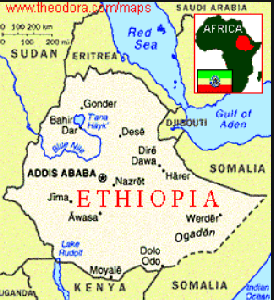
The 20th century saw very difficult conditions. In the 1980’s, Ethiopia forbade the practice of Judaism and teaching Hebrew. Jews were imprisoned on fabricated charges of being Zionist spies and Ethiopian Jewish rabbis, known as Kesim, were constantly harassed by the Ethiopian government. Forced military conscription took Jewish boys as young as 12 years away from their families, who often never heard from them again. A famine made it worse. Israel made a major effort to move them to Israel. Today, over 36,000 Ethiopian Jews live there.
Ethiopia has a rich and ancient Jewish heritage. Judaism was the state religion of Ethiopia from the 7th century BCE to 330 CE. It became Christian when the Ethiopian Emperor Ezana converted to Christianity. The Christians behaved brutally to the Jews resulting in revolt and overthrow of the Christians. In the 9th century it became a Jewish country again After three centuries of Jewish rule, Egypt grew wary of the growing power of Jewish Ethiopia and united with the Ethiopian Orthodox Church to overthrow them. This led to their murder, sale, or forceful conversion to Christianity and eventually a mass suicide that resembles Masada.
THE
INCREDIBLE
STORY OF THE JEWISH PEOPLE
